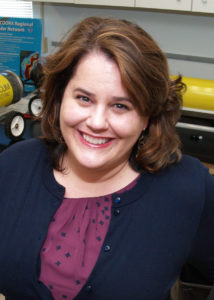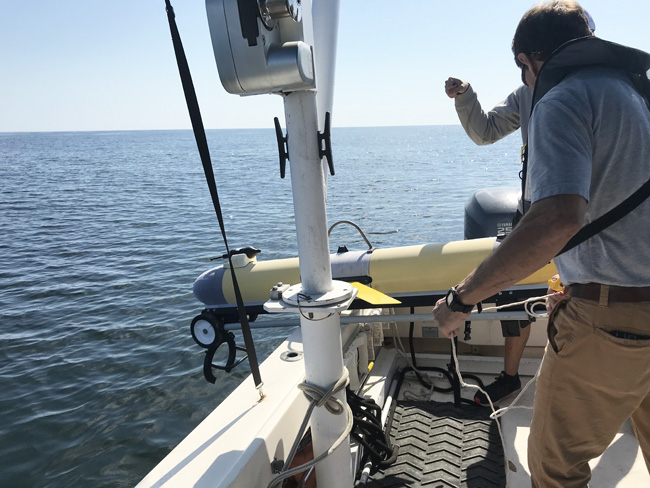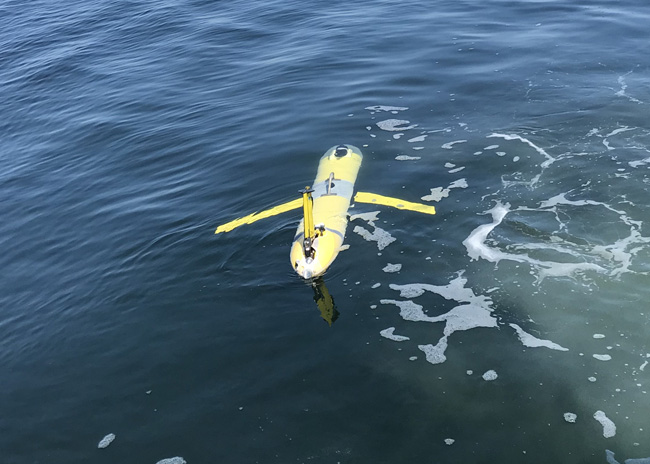University of Georgia Skidaway Institute of Oceanography scientist Catherine Edwards is participating in a collaborative project that will track the migration patterns of important fish species using artificial intelligence and a fleet of underwater robots. The project is a joint effort among UGA Skidaway Institute, Georgia Tech, Michigan State University, Wright State University and Gray’s Reef National Marine Sanctuary.

Catherine Edwards
The researchers use a combination of two different types of autonomous underwater vehicles equipped with acoustic receivers. Edwards specializes in gliders — torpedo-shaped crafts that can be packed with sensors and sent on underwater missions lasting weeks. The gliders will join a group of six robotic fish designed by collaborators at Michigan State. Both types of robots will use their “underwater ears” to listen for the sound signals from fish that had previously been tagged with acoustic transmitters. The tags on each fish transmit a different sound signal, allowing the researchers identify fish movements over time and distance.
The gliders will monitor the density of the water which controls the speed of sound through it. Using that data, Edwards and her colleagues will be able to better locate the tagged animals as well as to identify the location of the gliders themselves — a problem that has been a significant challenge in underwater navigation.

Technicians prepare to deploy a glider. Photo credit: Kim Donoghue
“Marine robots can be used to accurately map and track marine animals, which will lead to a better interpretation of their migration patterns,” Edwards said. “But because fisheries managers, oceanographers and roboticists have different perspectives and knowledge bases, it can be difficult to take advantage of cutting edge research in each field without a significant effort to translate among the groups.”
The overall goal of the project is to develop an interface that will translate the missions and needs of fisheries managers into multi-level planning for a fleet of marine robots to monitor fish populations in a dynamic coastal ocean environment. While preparing for the first field season, the team is developing an interface that uses artificial intelligence as a powerful tool to plan out the actions of the robots to identify hotspots based on these insights, helping their human pilots, and ultimately fulfilling the goals of fisheries managers.

A Skidaway Institute glider named “Angus” begins a mission. Photo credit: Kim Donoghue
“An important component of our work at NOAA’s Gray’s Reef National Marine Sanctuary is to study marine organisms’ use of the sanctuary, whether as a migration route, foraging location or other function,” said Stan Rogers, superintendent of the sanctuary. “The glider and robotic technology Dr. Edwards and her team will deploy in Gray’s Reef can help us track the movement patterns of animals that use the sanctuary and identify specific features of Gray’s Reef that are highly attractive to fish.”
The researchers hope to begin preliminary field testing this summer, depending on COVID-19-related restrictions.
The other members of the research team are Fumin Zhang from Georgia Tech, Xiaobo Tan from Michigan State University and Mike Cox from Wright State University.
The project is funded by a three year, $1 million National Science Foundation grant.


